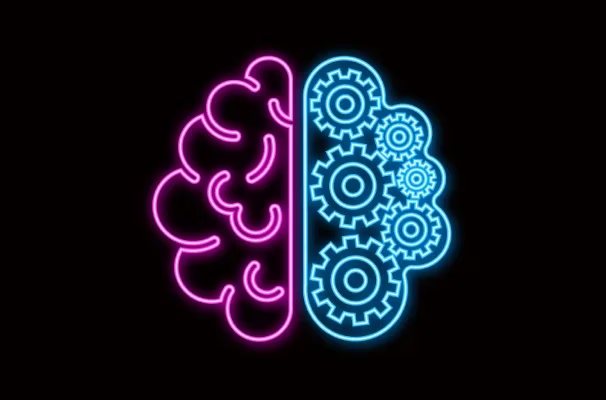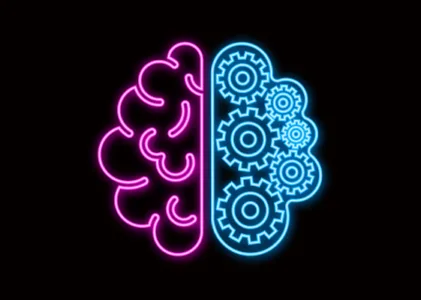What is neuroscience in simple words?
Imagine holding a universe in your hands—a universe more complex than all the stars, planets, and galaxies combined. Now, realize that this universe is right inside your head. It’s your brain, an organ so intricate that it has baffled scientists for centuries. Welcome to the fascinating world of neuroscience, where researchers are on a thrilling journey to understand the most enigmatic organ in the human body.
The Brain: A Personal Universe
Your brain is like a bustling city, home to nearly 86 billion residents—your neurons. Each neuron is a unique individual, with its own personality and job. Some are chatterboxes, constantly sending messages to their neighbours. Others are more reserved, only speaking up when they have something important to say. Together, these neurons form an intricate network, communicating through electrical impulses and chemical messengers called neurotransmitters.
Just as a city has different neighbourhoods, each with its unique vibe, your brain has distinct regions. The frontal lobe is like the city’s executive district, where important decisions are made. The temporal lobe is the cultural hub, processing sounds and language. The parietal lobe is the sensory borough, interpreting touch and spatial awareness. The occipital lobe is the visual arts quarter, making sense of everything you see.
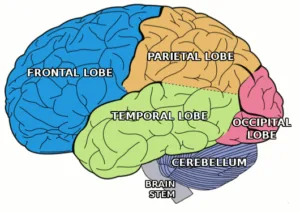
But here’s the really cool part: your brain isn’t just a static city. It’s more like a living, breathing metropolis that’s constantly under construction. This ability to change and adapt is called neuroplasticity. Imagine if, every time you learned something new, your city grew a new neighbourhood or strengthened the connections between existing ones. That’s neuroplasticity in action!
The Mind-Body Connection: Your Brain’s Fitness Center
Now, let’s talk about your brain’s gym—physical exercise. You might think working out is just for your muscles, but it’s also a brain-boosting bonanza! When you hit the treadmill or lift weights, your brain gets a rush of chemicals that make it feel good and work better.
One of these chemicals is BDNF (Brain-Derived Neurotrophic Factor), which scientists playfully call “Miracle-Gro for the brain.” Just as the plant food helps your garden flourish, BDNF helps your neurons grow and form stronger connections. It’s like giving your brain cells a hearty meal and a pep talk all at once!
Exercise also increases blood flow to your brain, delivering more oxygen and nutrients. It’s like upgrading your brain’s delivery service from a bicycle to a high-speed drone. More oxygen means your neurons can work faster and more efficiently. So, next time you’re struggling with a problem, try going for a run or doing some yoga. You might just jog your way to a solution!
Memory: Your Brain’s Library and Librarian
Let’s visit your brain’s library—the hippocampus. This seahorse-shaped region is where your memories are catalogued and stored. But the hippocampus isn’t just a passive storage unit; it’s an active librarian that decides which memories to keep on the main shelves and which to archive in the basement.
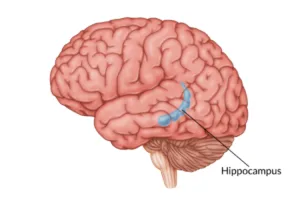
Ever wonder why you can remember your first kiss vividly, but not what you had for lunch last Tuesday? That’s your hippocampus at work. It tags emotionally charged events as “high priority,” ensuring they get prime shelf space in your memory library. Meanwhile, routine events like yesterday’s sandwich get filed away in the archives, easy to overwrite when new information comes in.
This selective process is crucial. If we remembered every single detail, our brains would be like overstuffed libraries with books piled to the ceiling. We’d be overwhelmed, unable to find the information we need. By prioritizing memories, the hippocampus helps us navigate life more effectively.
But what about those moments when you walk into a room and forget why you’re there? That’s a quirk of how memories are formed. When you plan to do something, your brain creates a temporary memory. As you move through different spaces, your brain does a quick reset, like opening a new browser tab. Sometimes, that temporary memory gets lost in the transition. It’s not a sign of ageing; it happens to everyone!
Sleep: Your Brain’s Cleaning Crew and Filing Team
After a long day, your brain’s library is a mess—books everywhere, sticky notes on every surface. Enter the night shift: sleep. When you drift off, your brain doesn’t just rest; it kicks into cleaning and organizing mode.

During deep sleep, your brain cells slightly shrink, creating wider spaces between them. This allows for a surge of cerebrospinal fluid to flow through, like a power washer cleaning city streets. This fluid washes away metabolic waste that accumulates during the day—stuff like beta-amyloid, which is linked to Alzheimer’s disease. It’s your brain’s way of taking out the trash.
But the night shift doesn’t just clean; it also organizes. During REM (Rapid Eye Movement) sleep, when most dreaming occurs, your brain replays the day’s events. It’s like a librarian sorting through the day’s new arrivals, deciding what to keep, where to file it, and what to connect it with. This process strengthens important memories and weaves them into the broader tapestry of your knowledge.
This is why “sleeping on it” really works when you’re facing a tough problem. Your brain spends the night making connections you might miss when awake. So, next time you’re stuck, don’t pull an all-nighter. Get some sleep and let your brain work its night-shift magic!
Emotions: Your Brain’s Weather System
Imagine your brain as a vast sky, capable of producing every type of weather—from gentle sunshine to raging storms. These weather patterns are your emotions, orchestrated by regions like the amygdala and prefrontal cortex.

The amygdala is like a super-sensitive radar, always on the lookout for potential threats. When it detects danger, it triggers an immediate response—usually fear or anger—to keep you safe. It’s the part that makes you jump at a loud noise or freeze when you see a snake. In our ancestors’ world, this quick reaction was a lifesaver.
But in today’s complex society, not every loud noise is a tiger, and not every unfamiliar person is a threat. This is where the prefrontal cortex steps in. It’s like the wise elder of your brain, providing context and reasoning. It might say, “That loud noise? Just a car backfiring. No need to panic.” Or, “That person looks different, but the difference isn’t a danger.” The prefrontal cortex helps tailor your emotional response to the actual situation.
These two regions engage in a constant dance, with the amygdala leading with quick, instinctive moves, and the prefrontal cortex guiding with thoughtful steps. When they’re in sync, you experience a healthy emotional life—responsive yet measured. But if one part dominates, you might become either recklessly impulsive or coldly detached.
Understanding this interplay can help us navigate our emotional weather. Feeling stormy? That’s your amygdala reacting. Try engaging your prefrontal cortex through activities like deep breathing or problem-solving. It’s like calling in the wise elder to calm the storm.
Language: Your Brain’s Translation and Creation Studio
Now, let’s explore your brain’s language centres—Broca’s area and Wernicke’s area. Together, they form a translation and creation studio that would make any multinational company jealous.
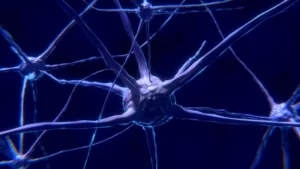
Wernicke’s area is your brain’s universal translator. It takes the sounds you hear or the text you read and converts them into meanings. When someone says “apple,” Wernicke’s area doesn’t just process the sound; it conjures up images, tastes, and memories associated with apples. It’s not just translating words; it’s creating a rich, multisensory experience.
Once the meaning is clear, Broca’s area takes over. It’s your brain’s production studio, turning thoughts into spoken words. It orchestrates a complex dance of muscles in your lips, tongue, and throat to produce each sound. Ever been tongue-tied? That’s Broca’s area struggling to choreograph this intricate performance.
But here’s where it gets even more fascinating: in bilingual or multilingual brains, these areas work overtime. They don’t just translate between languages; they also mediate between different cultural contexts. For example, the concept of “privacy” might evoke a cosy room for an American but a secluded forest for a Scandinavian. Your language centres adapt, ensuring you don’t just speak words, but truly communicate.
This linguistic juggling act offers cognitive benefits. Bilinguals tend to have better executive functions—skills like focusing, task-switching, and problem-solving. It’s as if managing multiple languages trains your brain to manage life’s complexities better. So, learning a new language isn’t just about communication; it’s a full-brain workout!
The Social Brain: Your Neural Network
Humans are ultra-social beings. Our success as a species hinges on our ability to understand and cooperate with others. This skill set is managed by your “social brain”—a network that includes the mirror neuron system, the temporoparietal junction (TPJ), and the medial prefrontal cortex (mPFC).
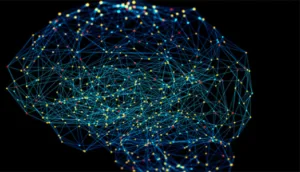
Mirror neurons are like your brain’s empathy engines. When you see someone smile, your mirror neurons fire as if you’re smiling too. Similarly, when you see someone in pain, these neurons make you wince. This mirroring helps you resonate with others’ emotions, laying the groundwork for empathy.
The TPJ is your brain’s perspective-taking center. It helps you understand that others have thoughts, beliefs, and desires different from your own. For example, if you know there’s a surprise party for your friend, the TPJ helps you interact without giving it away. You can hold your knowledge separate from their ignorance.
The mPFC is like a social strategist. It uses information from mirror neurons and the TPJ to predict how others might act and plan your responses. If your mirror neurons sense a friend is upset and your TPJ infers it’s due to work stress, your mPFC might devise a plan: “Let’s get coffee. I’ll listen, then suggest time-management techniques.”
This social brain network makes human collaboration possible. From hunter-gatherer bands to modern corporations, our ability to understand each other’s minds allows us to work toward shared goals. It’s the neural foundation of our societies.
Neuroscience – The Quantum Brain: A Frontier of Mystery
Now, let’s venture to the very edge of neuroscience, where the brain’s mysteries blur into the enigmas of quantum physics. Some scientists propose that to fully understand consciousness, we need to look at the brain through a quantum lens.
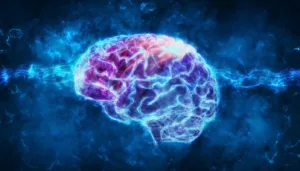
At the quantum level, particles can exist in multiple states simultaneously (superposition) and instantly affect each other across distances (entanglement). Some researchers, like Sir Roger Penrose and Stuart Hameroff, suggest that similar quantum events occur in our brain cells, specifically in structures called microtubules within neurons.
Their theory, known as Orchestrated Objective Reduction (Orch-OR), posits that these microtubules can host quantum processes. Just as a quantum particle can be “here” and “there” at once, a neuron’s state could be a superposition of “firing” and “not firing.” When this quantum state “collapses” into a definite state, it creates a moment of consciousness.
Furthermore, they propose that neurons could be “entangled” like quantum particles. This would allow instantaneous communication across the brain, perhaps explaining how we can synthesize information from different regions into a unified experience.
This quantum brain hypothesis is highly controversial. Many neuroscientists argue that the warm, wet environment of the brain would disrupt delicate quantum states. They see consciousness emerging from classical interactions between neurons.
Yet, the quantum brain idea persists, partly because it tackles hard questions that classical neuroscience struggles with. How does subjective experience arise from objective brain matter? How do we make decisions if our thoughts are just predetermined neural firings? Quantum mechanics, with its inherent uncertainty and observer effects, offers some intriguing angles.
Whether or not our brains operate on a quantum level, exploring this frontier pushes us to rethink fundamental assumptions. It’s a beautiful example of how neuroscience, in trying to understand our inner universe, intersects with our quest to understand the outer one.
READ ALSO
5G and Beyond – Revolutionizing Wireless Communication
Biotechnology – Harnessing Natures Toolbox
Quantum Computing – Unlocking Mysteries of Subatomic World
DNA – Building Blocks of Life
The Atmosphere – Exploring Nature’s Invisible Cloak
Neuroscience – The Journey Continues: Your Brain, Your Frontier
As we’ve explored, your brain is far more than a three-pound lump of tissue. It’s a personal universe—as complex as the cosmos, as dynamic as a living city, as profound as quantum reality. From the bustling neuron neighbourhoods to the quiet night shifts of sleep, from the emotional weather systems to the quantum dance of consciousness, your brain is a frontier of endless wonders.
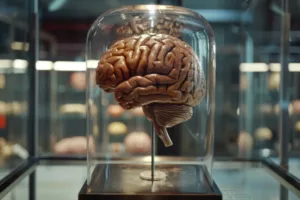
But here’s the most exciting part: you’re not just reading about this frontier; you’re actively exploring it. Every time you learn something new, solve a problem or connect with another person, you’re sending your neurons on a new expedition. You’re constructing fresh neighbourhoods, strengthening bridges between ideas, and lighting up uncharted territories.
Neuroscience is more than an academic field; it’s an invitation to self-discovery. The more we understand our brains, the better we can nurture them. And as technology advances—from high-resolution brain imaging to neural implants—our exploration tools are getting sharper. We’re moving from observing the brain’s continents to mapping its cities, streets, and even individual houses. Each breakthrough brings us closer to tackling challenges like Alzheimer’s, depression, and beyond.
Yet, for all our progress, the brain’s deepest mysteries remain. How does this electrochemical organ create the subjective experience of being you? Is consciousness a grand symphony of neurons, a quantum harmony, or something yet unimagined? These questions don’t just probe the brain; they touch the core of human identity.
So, as you go about your day—working, playing, dreaming—remember that you carry the most spectacular frontier within you. Your thoughts, emotions, and choices aren’t just abstract events; they’re physical explorations, rewiring the universe between your ears. In studying the brain, we’re not just unravelling an organ’s secrets; we’re decoding the very essence of what makes us human.
The journey through your inner cosmos is endless, breathtaking, and deeply personal. Every day in neuroscience brings new maps, but the most thrilling voyages are those you chart yourself. So, keep learning, keep questioning, keep experiencing. Your brain—your personal universe—is waiting to be discovered.
References:
1. Doidge, N. (2007). The Brain That Changes Itself. Penguin Books.
2. Ratey, J. J., & Hagerman, E. (2008). Spark: The Revolutionary New Science of Exercise and the Brain. Little, Brown and Company.
3. Walker, M. (2017). Why We Sleep. Scribner.
4. LeDoux, J. (2015). Anxious: Using the Brain to Understand and Treat Fear and Anxiety. Viking.
5. Lieberman, M. D. (2013). Social: Why Our Brains Are Wired to Connect. Crown.
6. Penrose, R., & Hameroff, S. (2011). Consciousness in the Universe: Neuroscience, Quantum Space-Time Geometry and Orch OR Theory. Journal of Cosmology, 14.
7. Ramachandran, V. S. (2011). The Tell-Tale Brain. W. W. Norton & Company.
8. Bialystok, E., Craik, F. I., & Luk, G. (2012). Bilingualism: Consequences for Mind and Brain. Trends in Cognitive Sciences, 16(4), 240-250.
9. Kandel, E. R., Schwartz, J. H., & Jessell, T. M. (2000). Principles of Neural Science (4th ed.). McGraw-Hill.
10. Sporns, O. (2010). Networks of the Brain. MIT Press.

